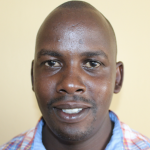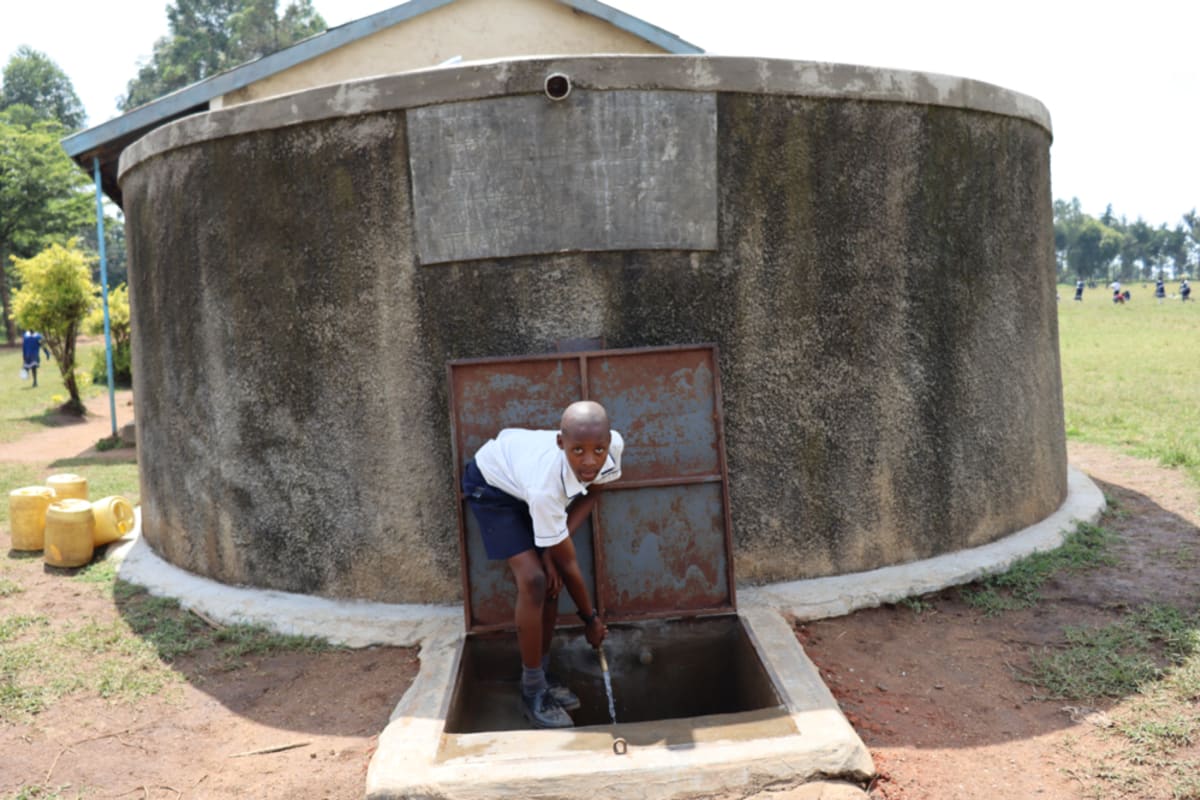There is no water at Shikusa Primary School. Students have to leave school to find water in the surrounding environment. They often find water in a swampy area, wading through bushes and reeds to get there.
This water is very dirty. Before dunking a container under the water, a stick must be used to remove some of the green algae floating on the surface. When the school uses up all of the water in those containers, students must make the trek once again.
Valuable class time is wasted.
After drinking dirty water fetched from the swamp, students are at great risk of getting ill and missing class altogether.
"Accessing clean water here has been of a big challenge to us," said Headteacher Christopher Ombula.
"Tasking pupils to go and fetch water or bring water from their homes for drinking at school is something uncertain - simply because you don't know where they are drawing water from, and the containers they are using to carry this water not to mention how they handle on the way."
Shikusa Primary School began in 1996 with a total population of 10 pupils and two teachers under a tree. It was started by prison officers at Shikusa Maximum Prison who wanted their children to receive an education without having to travel long distances to the urban center. The school has grown over the years and now has a student enrollment of 469.
The school is situated inside the prison. The area is very green. It is the largest prison in Western Kenya and its wards produce maize crops at a large scale, supplying maize grains to all of the other prisons in Kakamega County.
The school is now accessible to all community members, even if they are not staff at the prison. In fact, 60% of the students enrolled are from the outside community.
What we can do:
Training
Hygiene and sanitation training will be held for two days. The facilitator will use PHAST (participatory hygiene and sanitation transformation), ABCD (asset-based community development), CTC (child to child), lectures, group discussions, and handouts to teach health topics and ways to promote good practices within the school. The CTC method will prepare students to lead other students into healthy habits, as well as kickstart a CTC club for the school.
Handwashing Stations
There is nowhere to wash hands.
Our training equips the CTC club to oversee the new facilities, such as handwashing stations, and make sure they are kept clean and in working condition. The two handwashing stations will be delivered to the school, and the club will fill them with water on a daily basis and make sure there is always a cleaning agent such as soap or ash.
VIP Latrines
There are currently nine latrines for 469 students. These are rarely cleaned because of the water shortage at school.
According to the headteacher, the school had been closed down at one point due to poor sanitation after heavy rain damage. The school was able to open later after receiving major support for new construction of sanitation facilities courtesy of prison officers. These same sanitation facilities are still being used, but are not nearly enough for the student body.
"The current state of sanitation and hygiene here needs urgent attention," added Headteacher Ombula.
"Pupils spend a lot of their time queuing to access the few available sanitation facilities. Chances of health hazards are very high simply because the ratio of pupils to available latrines do not match, and they get dirty easily."
Two triple-door latrines will be constructed with local materials that the school will help gather. And with a new source of water on school grounds, students and staff should have enough to keep these new latrines clean.
Rainwater Catchment Tank
A 50,000-liter rainwater catchment tank will help alleviate the water crisis at this school. The school will also help gather the needed materials such as sand, rocks, and water from the swamp for mixing cement. Once finished, this tank can begin catching rainfall that will be used by the school’s students and staff.
We and the school strongly believe that with this assistance, standards will significantly improve. These higher standards will translate to better academic performance!

 Rainwater Catchment
Rainwater Catchment
 Rehabilitation Project
Rehabilitation Project

































